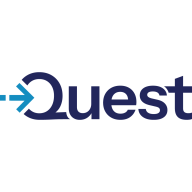

Perforce Puppet and KACE Systems Management Appliance are competing in systems management. Perforce Puppet excels in configuration management, while KACE SMA is noted for its comprehensive endpoint management features. Perforce Puppet leads in deployment flexibility; however, KACE SMA is favored for its integrated features and cost-effectiveness.
Features: Perforce Puppet offers robust automation and configuration management, integration with Bomgar, and real-time reporting features that improve system management. KACE SMA provides software distribution, patch management, and asset tracking, which serve as an all-in-one solution for endpoint management, enhancing organizational efficiency.
Room for Improvement: Perforce Puppet could benefit from simplifying its complex scripting requirements and expanding its compatibility with non-Windows systems. Documentation could be more user-friendly. KACE SMA could enhance its interface for greater user-intuitiveness, improve patch management efficiency, and offer better out-of-the-box reporting tools for broader usage scenarios.
Ease of Deployment and Customer Service: Perforce Puppet supports integration with existing systems, providing a flexible deployment model. KACE SMA ensures a straightforward setup, praised for its smart service center and technical support, which facilitate complex task handling. Both offer reliable customer support, with KACE SMA noted for quick issue resolution.
Pricing and ROI: Perforce Puppet involves higher initial costs but promises a significant ROI through customizable, scalable solutions. KACE SMA's competitive pricing ensures quicker ROI by reducing the need for additional software, making it cost-effective in the long run.
| Product | Market Share (%) |
|---|---|
| KACE Systems Management Appliance (SMA) | 1.1% |
| Kaseya VSA | 18.2% |
| NinjaOne | 13.5% |
| Other | 67.2% |
| Product | Market Share (%) |
|---|---|
| Perforce Puppet | 1.9% |
| Red Hat Ansible Automation Platform | 16.0% |
| Microsoft Configuration Manager | 11.5% |
| Other | 70.6% |


| Company Size | Count |
|---|---|
| Small Business | 8 |
| Midsize Enterprise | 20 |
| Large Enterprise | 15 |
| Company Size | Count |
|---|---|
| Small Business | 10 |
| Midsize Enterprise | 1 |
| Large Enterprise | 4 |
KACE Systems Management Appliance offers integration capabilities, efficient image deployment, and comprehensive asset management. It supports centralized management across diverse devices and locations, simplifying IT processes and enhancing security.
KACE Systems Management Appliance provides single-pane visibility for endpoint management, mass software deployment, automated patch management, robust scripting, and detailed inventory tracking. It streamlines IT management and improves cyber-security compliance through remote software updates and centralized IT request handling. Despite struggles with scalability and the need for interface improvements, it enables efficient device imaging, script automation, and network management through detailed reporting. Organizations find it effective for software deployment, asset management, and endpoint monitoring, serving thousands of IoT devices and desktops.
What are the key features of KACE Systems Management Appliance?In healthcare, KACE Systems Management Appliance is used for maintaining device compliance and security standards. Educational institutions benefit from its capabilities to manage large numbers of endpoints across campuses. In finance, it aids in strict compliance requirements through automated patch management and detailed reporting. Retail sectors leverage its asset management features to streamline operations across numerous locations.
Perforce Puppet provides robust features for configuration management, compatible with Linux, Windows, and UNIX. It simplifies infrastructure management with automation and role-based access control, though it requires mastering command-line operations due to limited GUI.
Perforce Puppet utilizes a hub-spoke architecture to enhance automation across production environments, excelling in provisioning and configuration management for on-prem servers. Its infrastructure as code approach eases deployment and maintenance, supported by community resources for stabilization. Support for diverse devices makes it adaptable for complex configurations, but pricing and integration gaps, especially with Infosec tools, pose challenges for some.
What are the key features of Perforce Puppet?Puppet is implemented across industries for managing production servers, especially in regulated environments. Its security compliance checks ensure adherence to required standards, while public configurations assist in device network integration. Industries benefit from its ability to streamline Linux server automation and explore expansion into Windows systems to meet cross-platform requirements.
We monitor all Remote Monitoring and Management (RMM) reviews to prevent fraudulent reviews and keep review quality high. We do not post reviews by company employees or direct competitors. We validate each review for authenticity via cross-reference with LinkedIn, and personal follow-up with the reviewer when necessary.